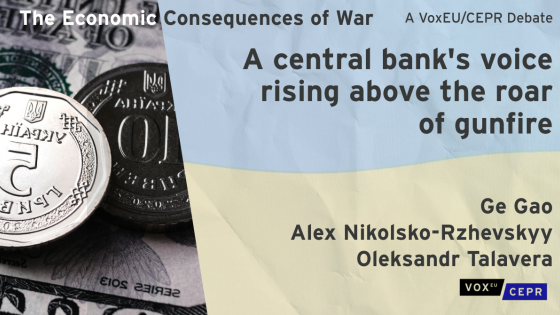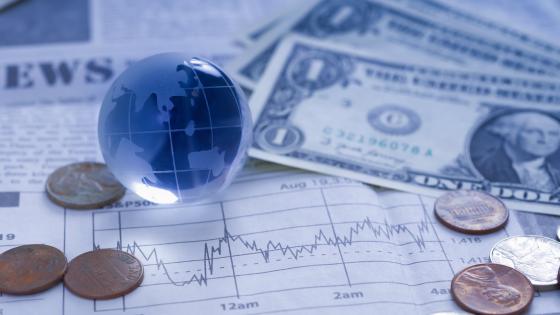Exchange rates are important to innumerable economic activities. Tourists care about the value of their home currency abroad. Investors care about the effect of exchange rate fluctuations on their international portfolios. Central banks care about the value of their international reserves and open positions in foreign currency as well as about the impact of exchange rate fluctuations on their inflation objectives. Governments care about the prices of exports and imports and the domestic currency value of debt payments. Markets care both directly - the market for foreign exchange is by far the largest market in the world – and indirectly, since exchange-rate shifts can affect all sorts of other asset prices.
No surprise then that forecasting exchange rates has long been at the top of the research agenda in international finance. Still, most of this literature is characterised by empirical failure. Starting with the seminal contribution of Meese and Rogoff (1983), a vast body of empirical research finds that models which are based on economic fundamentals cannot outperform a naive random walk model (i.e. the exchange rate is, at any moment of time, as likely to rise as it is to fall). Therefore, the prevailing view in the international finance profession – shared in academic and policy circles as well as in a large fraction of the practitioner community – is that exchange rates are not predictable, especially at short horizons. In academic jargon, exchange rates are thought to follow a random walk.
A Random Walk?
At first glance, the random walk model makes a lot of sense. The person on the street knows that movements in exchange rates are often hard to explain and is reluctant to believe that fundamental forces are at play. Exchange rates often swing wildly on a daily basis for reasons that apparently have little connection to economic and financial variables. Even worse, they often move in the opposite direction of differences in short-term interest rates across countries. Despite its simplicity, therefore, the random walk model remains appealing because it leads to smaller forecasting errors than most other exchange rate models.
The horse race
This conclusion is based on a ‘horse race’ between the random walk and theory-based predictions. In this race, the random walk always wins. Our recent research argues that this is not the end of the story, but explaining our point requires something of a detour – an explanation of the ‘horse’ that classic exchange rate theory says should be winning the race every time.
The cornerstone condition for efficiency in the foreign exchange market is ‘uncovered interest parity’, i.e. the exchange rate jumps to the point where risk-neutral investors are indifferent between holding any two currencies. As a matter of accounting, the difference between the rates of return on the two currencies is the interest rate gap plus the expected appreciation; if the 12-month dollar interest rate is 5% while the 12-month yen interest rate is 1%, then, according to the theory, markets must expect the yen to appreciate 4%. If this isn’t true, why would investors hold yen?
As logical as this seems, the relationship does not hold in the data, as the famous “Fama regression” (Fama, 1984) showed. One relationship that does hold in the data is the so-called covered interest parity, which states that the interest rate gap equals the premium on forward contracts. That is to say, if the dollar-yen interest rate gap is 4% as in the example, the forward contract for dollar-yen will imply a 4% premium over today’s exchange rate for yen. Indeed, that is basically how banks set forward rates. The Fama regressions put together the uncovered and covered interest parities to check whether the actual exchange rate follows the forward premium. In the example, the question would be whether the actual appreciation of the yen over the next 12 months was 4% (plus or minus some white noise randomness due to unforeseeable events). Decades of research on masses of data by dozens of scholars show that the actual appreciation does not follow the forward rate. Indeed, it is the currency with the high interest rate that tends to appreciate, not the one with the low interest rate.1
This is stylised fact that is so well known that it has a name, the “forward bias puzzle,” namely high-interest currencies tend to appreciate when uncovered parity predicts depreciation. While troublesome for economic theory, this puzzling behaviour may be valuable to investors.2
As mentioned, the horse race between pure randomness and uncovered interest parity always goes to randomness. But what happens if we let a new horse enter the race? What happens if we assume that investors ignore the pure theory and instead work off the empirical fact, i.e. the forward bias?
Valuable Predictions
In recent research, we examine whether exchange rate predictability could translate into economic gains for investors using an asset allocation strategy that exploits this predictability (Della Corte, Sarno and Tsiakas, 2007). In particular, we assess the economic value of the predictive ability of empirical exchange rate models that condition on the forward premium in the context of dynamic asset allocation strategies.3
We focus on predicting short-horizon exchange rate returns when conditioning on the lagged forward premium. But statistical evidence of exchange rate predictability in itself does not guarantee that an investor can profit by exploiting this predictability. We therefore evaluate the impact of predictable changes in the conditional FX returns and volatility on the performance of dynamic allocation strategies. Ultimately, we measure how much a risk-averse investor is willing to pay for switching from a dynamic portfolio strategy based on the random walk model to one which conditions on monetary fundamentals, the forward premium or a broader set of variables, including the money supply and income differentials across countries.
Our work suggests that these exchange rate predictions are valuable. There is strong economic evidence against the naïve random walk benchmark with constant variance innovations. In particular, the predictive ability of forward exchange rate premia has substantial economic value in a dynamic allocation strategy. In addition, conditioning on a forecast of future volatility given current information, rather than assuming that volatility in the foreign exchange market is constant, further enhances the predictability of exchange rates and increases risk-adjusted profits.
Conclusions
There’s money to be made in the world’s biggest market. Our evidence suggests that investors using sophisticated models could make informative exchange rate predictions and considerably outperform the random walk benchmark. Those trading currencies may find it worthwhile investing in a model using the forward premium and dynamic volatility. Policy makers can also find some comfort in these results since predictability in the exchange rate would allow them to better gauge the value of their international reserves, their debt positions, and their competitiveness in international goods markets.
References
Della Corte, P., L. Sarno, and I. Tsiakas (2007). “An Economic Evaluation of Empirical Exchange Rate Models,” CEPR Discussion Paper 6598. http://www.cepr.org/pubs/dps/DP6598.asp Forthcoming in Review of Financial Studies.
Fama, E.F. (1984) “Forward and Spot Exchange Rates,” Journal of Monetary Economics 14, 319-338.
Meese, R.A., and K. Rogoff (1983). “Empirical Exchange Rate Models of the Seventies: Do They Fit Out of Sample?” Journal of International Economics 14, 3-24.
Footnotes
1 More technically, the future k-period change in the exchange rate is regressed on the current k-period forward premium. If the market is efficient, the intercept of this regression should be zero, the slope (beta) in this regression should be 1, so that the forward premium today is an optimal predictor of the future exchange rate change. Also, the error term should be white noise, i.e. uncorrelated with information available today or in the past.
2 This fact is what drives much of the so-called carry trade where funds borrow in low-interest rate currencies to invest in higher-return assets in other currencies. Due to the forward premium puzzle, they can, on average, buy enough of the original currency to pay off the loan and still pocket a bundle.
3 This means a portfolio whose shares shift according to current information, especially the forward rate



